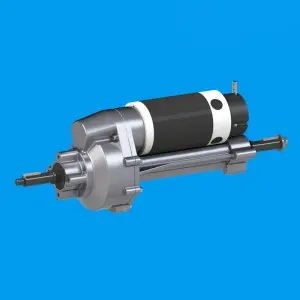When it comes to cars, even the most car-savvy people are often confused by various technical terms. Confusing concepts include transaxles and transmissions. These terms are often used interchangeably, leading to a common misconception that they refer to the same thing. However, in this blog, we will delve into the differences between transaxles and transmissions, clarifying their different roles in vehicle performance.
What is a transaxle?
A transaxle combines two important components of a vehicle’s drivetrain: the transmission and the axles. It is commonly found on front-wheel drive and all-wheel drive vehicles, where the engine’s power is sent to the front and rear wheels. A transaxle effectively combines the transmission and differential into a single unit, with the dual purpose of transmitting power from the engine to the wheels and controlling the gear ratio.
Learn about transfers:
On the other hand, a transmission is a mechanism that helps transmit the power generated by the engine to the wheels. It is an essential part of every car and is responsible for controlling the amount of torque that reaches the wheels. Transmissions are commonly used in rear-wheel drive and four-wheel drive vehicles.
Main difference:
1. Placement: The main difference between a transaxle and a gearbox is their placement within the vehicle. The transaxle is usually located between the engine and driven wheels, reducing the overall weight and complexity of the drivetrain. In contrast, a transmission is typically mounted at the rear or front of a vehicle, transmitting power to the rear or front wheels, respectively.
2. Function: Although both the transaxle and the transmission are responsible for transmitting power to the wheels, they function differently. The transaxle not only transmits power, but also integrates the functions of the gearbox (changing gear ratios) and differential (transmitting power to the wheels at different speeds when cornering). Transmissions, on the other hand, are solely focused on power delivery and shifting.
3. Vehicle type: Due to the compact design, transaxles are usually used in front-wheel drive and all-wheel drive vehicles, while transmissions are usually used in rear-wheel drive and four-wheel drive vehicles. These differences are based on the specific driveline arrangement and requirements of different vehicle types.
in conclusion:
In conclusion, a transaxle and a transmission are not the same thing. While they are both integral components of a vehicle’s powertrain, their roles and functions vary. A transaxle combines the functions of a transmission and a differential to transmit power to the front and rear wheels of some vehicles. A transmission, on the other hand, is solely focused on transferring power from the engine to the wheels. Knowing these distinctions will help car enthusiasts get the technical jargon right and better understand a vehicle’s drivetrain. So the next time you come across the terms transaxle and gearbox, you’ll gain a better understanding of the intricacies of how a car moves.
Post time: Jul-28-2023


